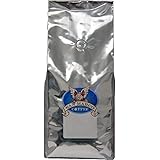Mastering Your French Press Brew: The Path to a Perfect Cup
There’s a familiar scenario for many coffee lovers: you’ve invested in a sleek French press, eagerly anticipating that rich, full-bodied brew. However, the reality sometimes falls short – a bitter taste, a watery consistency, or worse, the dreaded “pressing disaster” where hot liquid erupts or the glass carafe cracks under immense pressure. As the video above eloquently demonstrates, achieving a truly perfect cup of French press coffee is less about complex rituals and more about understanding a few crucial, yet often overlooked, fundamentals.
Indeed, this seemingly simple device, known in French as a `cafetière à piston` due to its plunger mechanism, offers an unparalleled depth of flavor when utilized correctly. Unlike many other brewing methods that filter out the coffee’s natural oils, the French press allows these essential compounds to remain, contributing to its signature mouthfeel and robust taste profile. Consequently, mastering this technique can significantly elevate your daily coffee experience from good to exceptional.
The Foundation: Understanding Your Coffee Grounds
The journey to excellent French press coffee begins with the grind size. As highlighted in the video, a coarse to medium-coarse grind is absolutely essential. Fine grounds, often used for espresso or drip coffee, pose a significant risk of over-extraction in a French press. When fine particles steep for an extended period, they release undesirable bitter and astringent compounds, resulting in a harsh-tasting cup.
Conversely, coarse grounds steep more evenly, allowing the desirable flavor compounds to dissolve without the bitterness. This controlled extraction ensures a balanced and pleasant flavor profile. According to extensive research by the Specialty Coffee Association (SCA), grind size is a critical determinant of extraction yield, directly influencing the sweetness, acidity, and body of the final brew. Therefore, investing in a quality burr grinder to achieve a consistent, coarse grind is a worthwhile endeavor for any aspiring home barista.
Precision in Temperature: The Golden Range for French Press Coffee
Water temperature is another non-negotiable factor for superior French press coffee. The video specifies an ideal range of 195 to 205 degrees Fahrenheit (90-96 degrees Celsius). This precise range is critical because water that is too hot (e.g., straight off a rolling boil at 212°F/100°C) can scorch the coffee grounds, leading to immediate over-extraction and a burnt flavor. Furthermore, excessive heat can degrade delicate aromatic compounds, diminishing the complexity of your brew.
On the other hand, water that is too cool will result in under-extraction, failing to dissolve enough of the desirable flavor compounds from the grounds. This often yields a weak, sour, or flat-tasting cup. Many professional baristas utilize temperature-controlled kettles to achieve this precise range, ensuring optimal extraction and flavor development in every batch of French press coffee.
The Steeping Process: Time is of the Essence
Once your coarse grounds meet water within the optimal temperature range, the steeping process begins. A recommended steeping time of four minutes allows for the full development of flavor without venturing into over-extraction territory. During this immersion, the coffee and water interact, enabling the dissolution of sugars, acids, and aromatic oils that contribute to the coffee’s taste.
The “full immersion” nature of French press brewing means that all coffee particles are constantly in contact with the water. Consequently, a proper steeping duration is paramount. Deviating significantly from this four-minute window can lead to either under-extracted (sour, weak) or over-extracted (bitter, harsh) French press coffee. It truly is a delicate balance that significantly impacts the final sensory experience.
Preventing Pressing Disasters: The “Coffee Raft” Solution
Perhaps the most common pitfall in French press brewing, as aptly described in the video, is the difficulty and potential danger associated with pressing the plunger. The “coffee raft” – a dense layer of saturated grounds that floats on top of the liquid – often creates immense resistance. This can lead to hot coffee spurting out, or in extreme cases, even a cracked carafe due to the concentrated pressure.
The simple yet effective solution involves breaking up this raft prior to pressing. By gently stirring the surface of the coffee with a chopstick or wooden spoon, you disperse the grounds, eliminating the compacted layer. This action significantly reduces the pressure required, transforming a potentially hazardous press into a smooth, effortless motion. Implementing this technique ensures both safety and a consistently clean press, allowing the plunger to descend easily without encountering undue resistance.
The Art of the Gentle Press
With the coffee raft successfully deconstructed, the pressing itself becomes a surprisingly simple, fluid action. The video emphasizes a gentle, steady motion, rather than applying excessive force. Pushing too hard or too quickly can agitate the coffee particles, forcing fine sediments through the mesh filter and into your cup, resulting in a gritty texture.
Furthermore, a forceful press can create micro-channels within the coffee bed, leading to uneven filtration. If you encounter significant stiffness during the press, it is advisable to release the plunger slightly, perhaps an inch or so, allowing the pressure to equalize, then resume the gentle descent. This controlled approach ensures that the tiny coffee particles remain at the bottom, delivering that characteristic rich, thick, full-bodied French press experience without the unwanted sediment.







